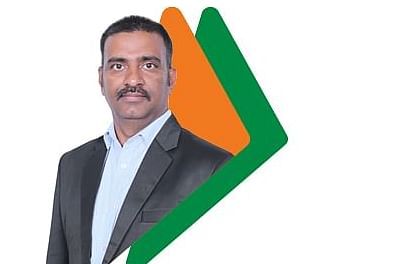As Chief of Innovation at National Payments Corporation India (NPCI), Vishal Anand Kanvaty has been instrumental in the growth of several products, including UPI/Rupay, NETC, AEPS, etc.
With over 20 years of experience in the payments industry, Vishal’s areas of interest include payments, credit cards, retail banking, and the impact of technology on banking. His recent focus has been on how payments can be transformed in India leveraging various technologies like blockchain, AI/ML, and AP’s.
Passionate about digital payments, he also founded a blockchain startup and is an advocate of many digital payment initiatives.
In a conversation with YourStory, Vishal spoke about the importance of technology, NPCI's partnership with The Fintech Meetup for the Fintech Yatra, and what fintech and financial services players need to do to bring in deeper digital payment penetration.
Started in 2018, the Fintech Yatra covers 32,000 km (India to London), with the journey set to happen over one to five years (15 incubators and 500 startups). The objective is to understand the current landscape of Digital India with a focus on the evolution of fintech(s), the stages at which different fintech(s) are working to provide solutions, the challenges they have been facing, and the identification of potential opportunities for collaboration. For the purpose of this journey, fintech's focus will be on payments, lending, insurance, financial inclusion, and blockchain.

Vishal Anand Kanvaty
Edited excerpts from the interview:
YourStory (YS): Tell us about NPCI’s role in the Fintech Yatra, and how it helps startups?
Vishal Anand Kanvaty (VK): NPCI has been part of the Fintech Yatra for three years now. It is an attempt to understand the fintech ecosystem, and provide a platform for fintech startups to present their ideas and incubate, and for us to work with them to take from a concept to a working product stage.
The aim is to look at deserving fintechs and to help harness their potential. How do we associate with this Yatra to create an environment for young bright minds to widen the horizon and look at more homegrown tech innovations?
NPCI plays the role of a knowledge partner, from a payments perspective. We provide mentorship, as we move along. The programme has various players, mentors, and includes funding. The idea is to give end-to-end help to a fintech startup.
YS: How do you select startups and help them?
VK: We follow a Helix Principle of startup selection. We first do hackathons, ideathons, and API accelerating programmes. We have various themes.
We have done a grand challenge for feature phones in the past, where we collaborated with CIE and Bill and Melinda Gates Foundation. We had over 750 applications from across the world, which helped us identify three new products and technologies for enabling future phone payments. We also have an innovation lab in Hyderabad T-Hub, which enables startups to access the latest technology advances and experts from NPCI.
We organise seminars, workshops, mentoring sessions, and community events, with a focus on training startups, and product innovations in the fintech domain.
We have an API accelerator programme, which is a marketplace for APIs from NPCI, banks, and other fintech players. This platform allows the developers to access any kind of APIs for testing and to churn out products.
YS: How have digital payments taken off in recent years, especially in a post-COVID world?
VK: Digital payments were already taking off. During the lockdown and with no economic activity, there was a slump. But now we have a significant shift towards contactless payments.
There is a permanent shift in the psychology that people are looking more closely at digital payments or contactless payments. Merchants using cash before COVID have shifted to digital payments as customers aren’t as comfortable with cash transactions as they were earlier. There has been an on-the-ground shift towards digital payments.
It is too early to comment on volumes, but UPI has been growing five to 10 percent every month. There is healthy growth in payment systems, especially after May and June. The next six to eight months will be critical on how customers are retained; they need to see the benefits of digital payments. If they don’t see a lot of benefits in digital payments, they will move back to cash.

YS: How important is it to focus on building the right products and technology?
VK: We have to primarily look at availability at every level when it comes to product and technology. One of the key fundamentals of any payments systems is that it should have no technical decline.
While there is a decline due to business and market factors like lack of funds, uptime and ensuring that you are able to service the customer transaction every time is important.
Fortunately, most of our banking systems have a robust technology and product. Failures are rare if you look at an NEFT or any transaction. The same standards need to be established for all payments systems, especially on the retail front, as it impacts the customer directly.
There are many fintech startups, but as a retail customer, I would trust a regulated entity like a bank to keep my money. That is a model we are following. We may keep small amounts in a wallet, but when it comes to accounts, the regulator is strong. The distribution and the way you acquire customers have changed.
The challenge is you have multiple points of compromise, especially from the cybersecurity perspective. Customer security is about creating awareness. How do you manage their account? The weakest link is always the challenge. We need to be careful about how we manage that ecosystem. Robust cybersecurity policies are critical to managing the overall ecosystem.
YS: How have the systems evolved and what has helped?
VK: Technology has been a great catalyst in the payments journey. The experience can be hampered without simple infrastructure. These are all catalysts. Tech improvements have always helped in the journey.
Open-source tech is coming up, the cost of management of software has dropped, and there is the ability to manage high volumes at a lower cost – all these have all helped.
Key technologies such as AI, ML, and blockchain play a strong role in digital payments. When I say blockchain, I look at it from a technology point of view and not cryptocurrency. The question is how can blockchain be used in reconciliation, and work within banks in a controlled environment.
We will soon have new form factors that can help and aid us with furthering digital payments.
YS: What does the future look like for digital payments in a new world?
VK: We have a long way to go in terms of digital payments. A country like India has different segments, regions, and languages. UPI and other payment systems have grown, but the potential is still significantly high.
I would say we have penetrated about 25 percent in terms of the reach we have, but barring recently, cash has been growing as well. Every aspect of the payment systems has seen growth…but whether it is reaching Rural India or taking UPI to every citizen, it is still a long way.
We believe the product portfolio is more or less complete in terms of meeting every segment of the population. We have Aadhaar-enabled payment systems, RuPay Cards, payment products…it is now about creating awareness in the ecosystem, especially this segment.
It is a long haul, distribution is costly, and reaching the remotest corners of India is significantly more difficult than what we have already achieved. We need to focus on the journey and work with the ecosystem to make it happen. Many startups are working in that area as well.
We need to work with every entity in the ecosystem - banks, regulator, startups, and entities that bring last-mile connectivity and awareness. People can create awareness. It is a complex system and all of us have a long way to go.
Edited by Teja Lele Desai
Link : https://yourstory.com/2020/12/upi-growing-5-to-10-pc-every-month-vishal-anand-kanvaty-npci
Author :- Sindhu Kashyaap ( )
December 14, 2020 at 05:30AM
YourStory



